12 divisions 1,500 artillery pieces At least 6 divisions Result Allied victory | Date 18 September 1918 | |
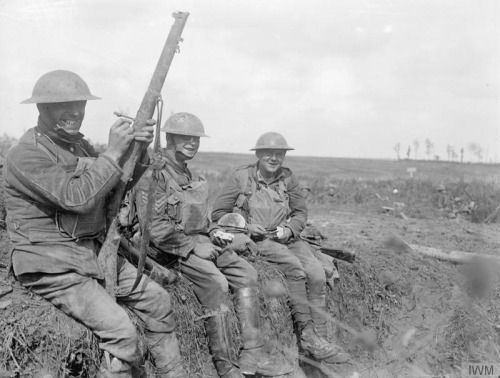 | ||
Combatants Similar World War I, Battle of the Sambre, Battle of St Quentin Canal, Battle of the Selle, Battle of St Quentin | ||
Battle of pehy
The Battle of Épehy was a battle of the First World War fought on 18 September 1918, involving the British Fourth Army (under the command of General Henry Rawlinson) against German outpost positions in front of the Hindenburg Line.The village of Épehy was captured on 18 September by the 12th (Eastern) Division.
Contents
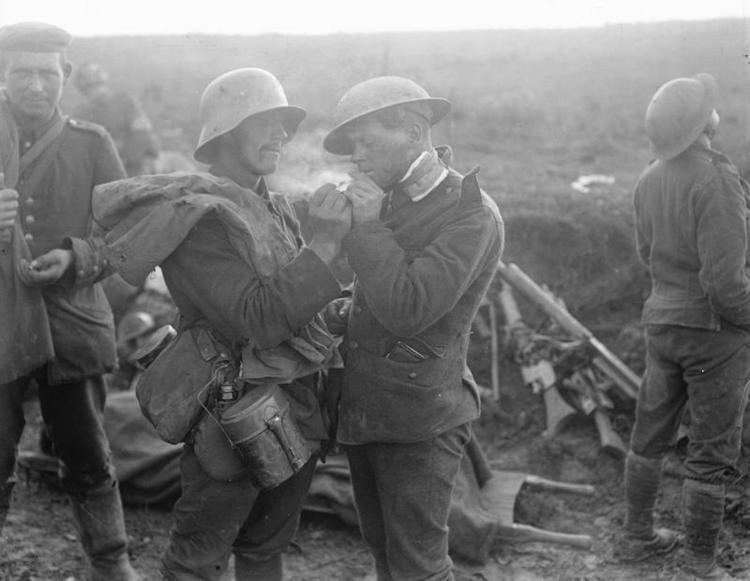
Prelude
Field Marshal Sir Douglas Haig, Commander-in-Chief (C-in-C) of the British Expeditionary Force (BEF) on the Western Front, was not eager to carry out any offensives, until the assault on the Hindenburg Line, influenced by mounting British losses from previous battles that year, over 600,000 casualties since March, 180,000 of them in the past six weeks. Rawlinson was kept reined in and advised by Haig to ensure his men were well rested for the eventual attack on the Line. When news arrived of the British Third Army's victory at the Battle of Havrincourt, Haig's mind was changed. On the day following the success at Havrincourt, 13 September, Haig approved Rawlinson's plan to clear German outpost positions on the high ground before the Hindenburg Line and preparations began.
Battle
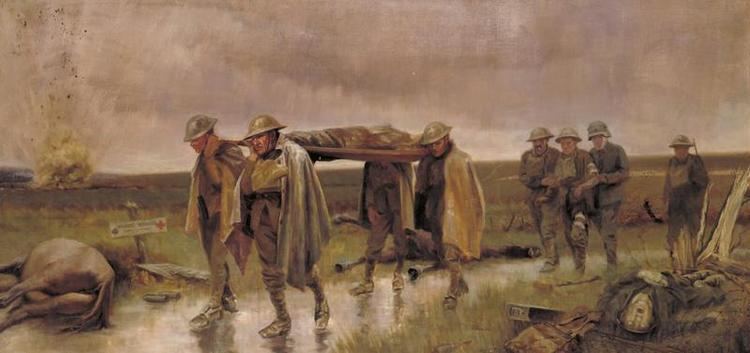
Very few tanks could be provided for the attack, so artillery would have to be relied upon to prepare the way but in the interests of surprise they would not be able to provide a preliminary bombardment. The 1,488 guns would instead fire concentration shots at zero hour and support the infantry with a creeping barrage and 300 machine-guns were also made available. All three corps of the Fourth Army were to take part, with V Corps of the Third Army on their left flank and on their right the French First Army (under Debeney). The objective consisted of a fortified zone roughly 3 miles (4.8 km) deep and 20 miles (32 km) long, supported by subsidiary trenches and strong points. The German 2nd Army and 18th Army defended the area.
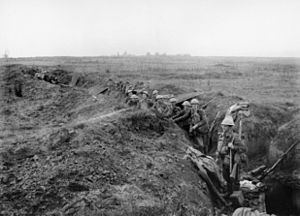
On 18 September at 5.20 am, the attack opened and the troops advanced. The promised French assistance did not arrive, resulting in limited success for IX Corps on that flank. On the left flank, III Corps also found difficulty when attacking the fortifications erected at "the Knoll", Quennemont and Guillemont farms, which were held determinedly by German troops, the village was however captured by the British 12th (Eastern) Division [7th Norfolk, 9th Essex and 1st Cambridge]. In the centre, General John Monash's two Australian divisions achieved complete and dramatic success. The 1st Australian Division and the 4th Australian Division, had a strength of some 6,800 men[3] and in the course of the day captured 4,243 prisoners, 76 guns, 300 machine-guns and thirty trench mortars. They took all their objectives and advanced to a distance of about 3 miles (4.8 km) on a 4 miles (6.4 km) front. The Australian casualties were 1,260 officers and men (265 killed, 1,057 wounded, 2 captured). The battle saw the first mutiny of Australian forces, when 119 men of the 1st Australian Battalion refused to conduct an attack to help the neighbouring British unit. Rather than face charges of desertion in the face of the enemy, they were charged with being AWOL (with all bar one soldier having their charges dropped after the armistice).
The attack closed as an Allied victory, with 11,750 prisoners and 100 guns captured.
Aftermath
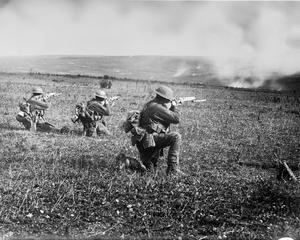
Although Épehy was not a massive success, it signalled an unmistakable message that the Germans were weakening and it encouraged the Allies to take further action with haste (with the offensive continuing in the Battle of St. Quentin Canal), before the Germans could consolidate their positions. The failure of the III Corps to take their last objective (the outpost villages) would mean that the American forces involved in the next battle (the Battle of St. Quentin Canal) would face a difficult task due to a hurried attack prior to the battle. The Deelish Valley Cemetery holds the grave sites of around 158 soldiers from the 12th (Eastern) Division who died during this battle, the nearby cemetery of Épehy Wood Farm Cemetery also holds the graves of men who died in this battle and the previous battles around this area.
